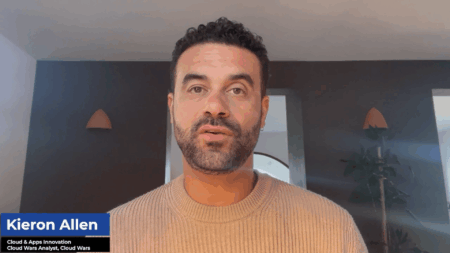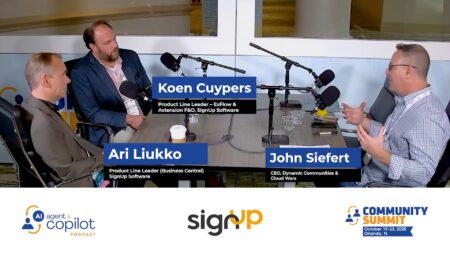
Highlights
00:05 — Aaron introduces the latest Back @ IT episode, explaining the Oracle Industry Lab’s aim to give people hands-on experiences with the latest technology and physically experience its real world impact.
01:27 — Oracle continues to focus on industry specific solutions and outcomes for its customers; a topic the company will dive into during its keynote segment at the Cloud Wars Expo in June.
01:43 — Aaron is joined by Vice President of Oracle Industry Lab Burcin Kaplanoglu to learn more about the lab’s impact and big-picture goals.
02:49 — Burcin describes how he arrived at the Oracle Industry Lab, including nearly 17 years of experience in the construction engineering industry. The experience fueled an idea to build a construction site to simulate real-world use cases and solve customer problems.
04:23 — Implementing a simulated environment and scaling to multiple locations proved its value — according to Burcin, simulating real-world cases resolved nearly 80% of issues that would otherwise have gone unnoticed.
05:07 — Bringing things to life and seeing outcomes firsthand pays off with customers.
05:58 — In the first 18 months of operations, Oracle had over 2,000 engagements from people all over the world. The lab, which began as a double-wide trailer, now occupies a three-story, 30,000-square-foot facility. The project has grown to facilitate multiple industries that learn from each other’s experiences.
07:42 — The lab has also proven value in fueling a partner ecosystem. Burcin describes Skydio‘s indoor autonomous drone testing within the new warehouse site.
10:02 — In another example, Burcin described the use of the lab featuring tools designed to provide precise measurements in plane manufacturing.
11:09 — The “why” behind a cloud company investing in physically testing and validating solutions is simple: To work with customers and co-innovate, to be good custodians of data, and to show evolving use cases when engaging with customers.
12:24 — Aaron discusses drone-captured data to facilitate quality assurance processes. Wrangling data points together into contextual, sensible information that can lead to better decision-making will become even more important as the mass of available data grows.
13:52 — Making sense of data is a complex process, particularly as industry data remains largely siloed. What each individual company has “is not enough” — more data is needed to reach the desired business outcomes.
15:19 — The drive to better contextualize data is in service of the customer.
16:00 — In a recent press release, Oracle announced new labs in both Chicago and England. the U.K. lab is focused on mobility and sustainability. It includes a train station, roads, a construction site, “food and beverage chaos,” and everything needed to fully simulate autonomous transportation. Lab capabilities are constantly evolving.
18:52 — Burcin clarifies the lab is not to be confused with a demo center. While capable of demonstrations, its main goal is to identify the technology, skills, and Oracle tech needed to solve problems.
20:45 — Emphasis on the experiential continues to take shape in the post-pandemic environment. Expectations endured a massive shift as workers operated outside corporate offices. Oracle’s new test site provides the ability to “show, don’t tell” when it comes to new products.
22:38 — Upon building the initial site, which consisted of a trailer, a steel structure, and a fence, the superintendent attached RFID tags with duct tape. The tags stayed in place through harsh conditions for 18 months, long enough that Burcin still jokingly claims the most important lab finding remains the power of duct tape.
23:55 — There is tremendous value in simplifying rather than overcomplicating things.
24:33 — Aaron and Burcin close with key takeaways. Burcin encourages CXOs to focus on their end users — the industry professionals getting hands-on experience with these tools. Figuring out what the end user needs and providing it accelerates adoption.






